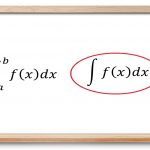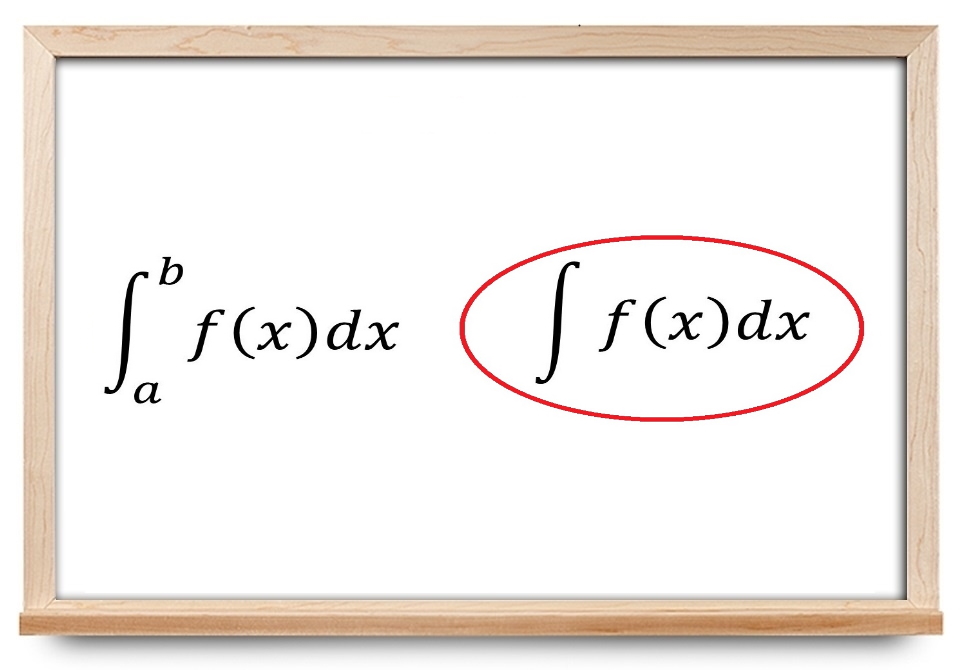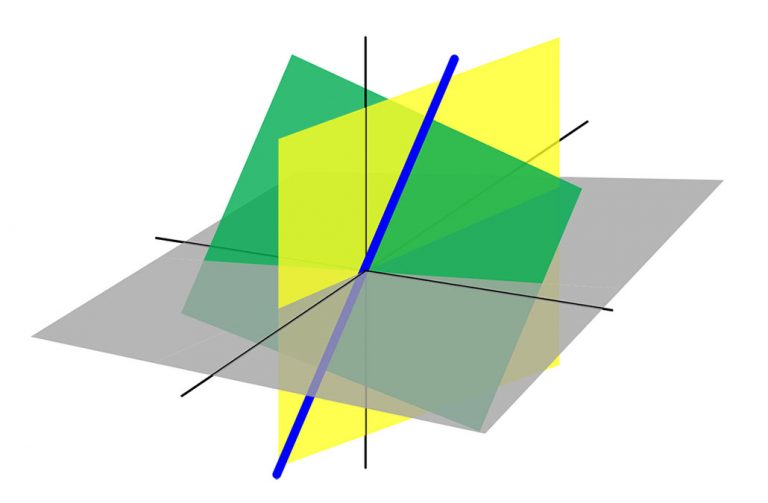در آموزشهای پیشین مجله فرادرس ، مفاهیم انتگرال و روشهای انتگرالگیری را بیان کردیم. در این آموزش، با مفاهیم انتگرال نامعین آشنا میشویم و چند مثال متنوع را بیان میکنیم.
محتوای این مطلب جهت یادگیری بهتر و سریعتر آن، در انتهای متن به صورت ویدیویی نیز ارائه شده است.
پادمشتق و انتگرال نامعین
تابع f ( x ) f ( x ) f ( x ) I I I F ( x ) F ( x ) F ( x ) پادمشتق f ( x ) f ( x) f ( x ) x x x I I I
F ′ ( x ) = f ( x ) \large { F ^ \prime \left ( x \right ) = f \left ( x \right ) } F ′ ( x ) = f ( x )
برای تابع f ( x ) f (x ) f ( x ) C C C
( F ( x ) + C ) ′ = F ′ ( x ) + C ′ = f ( x ) + 0 = f ( x ) . \large { \left ( { F \left ( x \right ) + C } \right ) ^ \prime = F ^ \prime \left ( x \right ) + C ^ \prime } = { f \left ( x \right ) + 0 } = { f \left ( x \right ) . } ( F ( x ) + C ) ′ = F ′ ( x ) + C ′ = f ( x ) + 0 = f ( x ) .
مجموعه همه پادمشتقهای تابع f ( x ) f ( x) f ( x ) f ( x ) f ( x) f ( x )
∫ f ( x ) d x = F ( x ) + C , if F ′ ( x ) = f ( x ) . \large { { \int } { { f \left ( x \right ) } { d x } } } = { F \left ( x \right ) + C , \; \; } \kern0pt{\text{if} \; \; F ^ \prime \left ( x \right ) = f \left ( x \right ) . } ∫ f ( x ) d x = F ( x ) + C , if F ′ ( x ) = f ( x ) .
در این تعریف، ∫ \int ∫ f ( x ) f ( x) f ( x ) x x x d x d x d x x x x C C C
انتگرال نامعین توابع رایج
انتگرالگیری فرایند معکوس مشتقگیری است، بنابراین، جدول انتگرالهای پایه از جدول مشتقهای پایه تبعیت میکند.
در جدول زیر فهرستی از انتگرالهای نامعین مهم ارائه شده است.
∫ x d x = x 2 2 + C \large \int { x d x } = { \large \frac { { { x ^ 2 } } }{ 2 } \normalsize } + C ∫ x d x = 2 x 2 + C ∫ a d x = a x + C \large \int { a d x } = a x + C ∫ a d x = a x + C ∫ x p d x = x p + 1 p + 1 + C \large \int { { x ^ p } d x } = { \large \frac { { { x ^ { p + 1 } } } } { { p + 1 } } \normalsize } + C ∫ x p d x = p + 1 x p + 1 + C ∫ x 2 d x = x 3 3 + C \large \int { { x ^ 2 } d x } = { \large \frac { { { x ^ 3 } } } { 3 } \normalsize } + C ∫ x 2 d x = 3 x 3 + C ∫ e x d x = e x + C \large \int { { e ^ x } d x } = { e ^ x } + C ∫ e x d x = e x + C ∫ d x x = ln ∣ x ∣ + C \large \int { \large \frac { { d x } } { x } \normalsize } = \ln \left | x \right | + C ∫ x d x = ln ∣ x ∣ + C ∫ sin x d x = – cos x + C \large \int { \sin x d x } = – \cos x + C ∫ sin x d x = – cos x + C ∫ b x d x = b x ln b + C \large \int { { b ^ x } d x } = { \large \frac { { { b ^ x } } } { { \ln b } } \normalsize } + C ∫ b x d x = ln b b x + C ∫ tan x d x = – ln ∣ cos x ∣ + C \large \int { \tan x d x } = – { \ln \left | { \cos x } \right | } + C ∫ tan x d x = – ln ∣ cos x ∣ + C ∫ cos x d x = sin x + C \large \int { \cos x d x } = \sin x + C ∫ cos x d x = sin x + C ∫ sec x d x = ln ∣ tan ( x 2 + π 4 ) ∣ + C = ln ∣ sec x + tan x ∣ + C \large \begin {align*} \int { \sec x d x } & = { \ln \left | { \tan \left ( { \large \frac { x } { 2 } \normalsize } + { \large \frac { \pi }{ 4 } \normalsize } \right ) } \right | + C } \\ &= { \ln \left | { \sec x + \tan x } \right | + C } \end {align*} ∫ sec x d x = ln tan ( 2 x + 4 π ) + C = ln ∣ sec x + tan x ∣ + C ∫ cot x d x = ln ∣ sin x ∣ + C \large \int { \cot x d x } = { \ln \left | { \sin x } \right | } + C ∫ cot x d x = ln ∣ sin x ∣ + C ∫ sec 2 x d x = tan x + C \large \int { { \sec ^ 2 } x d x } = \tan x + C ∫ sec 2 x d x = tan x + C ∫ csc x d x = ln ∣ tan x 2 ∣ + C = − ln ∣ csc x + cot x ∣ + C \large \begin {align*} \large \int { \csc x d x } & = { \ln \left | { \tan \large \frac { x } { 2 } \normalsize } \right | + C } \\ & = { - \ln \left | { \csc x + \cot x } \right | + C } \end {align*} ∫ csc x d x = ln tan 2 x + C = − ln ∣ csc x + cot x ∣ + C ∫ sec x tan x d x = sec x + C \large \int { \sec x \tan x d x } = \sec x + C ∫ sec x tan x d x = sec x + C ∫ csc 2 x d x = − cot x + C \large \int { { \csc ^ 2 } x d x } = - \cot x + C ∫ csc 2 x d x = − cot x + C ∫ d x 1 + x 2 = arctan x + C \large \int { \large \frac { { d x } } { { 1 + { x ^ 2 } } } \normalsize } = \arctan x + C ∫ 1 + x 2 d x = arctan x + C ∫ csc x cot x d x = − csc x + C \large \int { \csc x \cot x d x } = - \csc x + C ∫ csc x cot x d x = − csc x + C ∫ d x 1 – x 2 = 1 2 ln ∣ 1 + x 1 – x ∣ + C \large \int { \large \frac { { d x } } { { 1 – { x ^ 2} } } \normalsize } = { \large \frac { 1 } { 2 } \normalsize } { \ln \left | { { \large \frac { { 1 + x } } { { 1 – x } } \normalsize } } \right | } + C ∫ 1– x 2 d x = 2 1 ln 1– x 1 + x + C ∫ d x a 2 + x 2 = 1 a arctan x a + C \large \int { \large \frac { { d x }} { { { a ^2 } + { x ^ 2} } } \normalsize } = { \large \frac { 1 } { a } \normalsize } \arctan { \large \frac { x } { a } \normalsize } + C ∫ a 2 + x 2 d x = a 1 arctan a x + C ∫ d x 1 – x 2 = arcsin x + C \large \int { \large \frac { { d x } } { { \sqrt { 1 – { x ^ 2 } } } } \normalsize } = \arcsin x + C ∫ 1– x 2 d x = arcsin x + C ∫ d x a 2 – x 2 = 1 2 a ln ∣ a + x a – x ∣ + C \large \int { \large \frac { { d x } } { { { a ^ 2 } – { x ^ 2 } } } \normalsize } = { \large \frac { 1 }{ { 2 a } } \normalsize } \ln \left | { \large { \frac { { a + x } } { { a – x } } \normalsize } } \right | + C ∫ a 2 – x 2 d x = 2 a 1 ln a – x a + x + C ∫ d x x 2 ± a 2 = ln ∣ x + x 2 ± a 2 ∣ + C \large \int { \large \frac { { d x } } { { \sqrt { { x ^ 2 } \pm { a ^ 2 } } } } \normalsize } = { \ln \left | { x + \sqrt { { x ^ 2 } \pm { a ^ 2 } } } \right | } + C ∫ x 2 ± a 2 d x = ln x + x 2 ± a 2 + C ∫ d x a 2 – x 2 = arcsin x a + C \large \int { \large \frac { { d x } } { { \sqrt { { a ^ 2 } – { x ^ 2 } } } } \normalsize } = \arcsin {\large\frac{x}{a}\normalsize} + C ∫ a 2 – x 2 d x = arcsin a x + C ∫ sinh x d x = cosh x + C \large \int { \sinh x d x } = \cosh x + C ∫ sinh x d x = cosh x + C ∫ d x x x 2 – 1 = arcsec ∣ x ∣ + C \large \int { \large \frac { { d x } } { { x \sqrt { { x ^ 2 } – 1 } } } \normalsize } = { \text {arcsec} \left | x \right | } + C ∫ x x 2 –1 d x = arcsec ∣ x ∣ + C ∫ sech 2 x d x = tanh x + C \large \int { { \text {sech} ^ 2 } x d x } = \tanh x + C ∫ sech 2 x d x = tanh x + C ∫ cosh x d x = sinh x + C \large \int { \cosh x d x } = \sinh x + C ∫ cosh x d x = sinh x + C ∫ sech x tanh x d x = – sech x + C \large \int { \text {sech} \, x \tanh x d x } = – { \text {sech} \, x } + C ∫ sech x tanh x d x = – sech x + C ∫ csch 2 x d x = − coth x + C \large \int { { \text {csch} ^ 2 } x dx } = - \text {coth} \, x + C ∫ csch 2 x d x = − coth x + C ∫ tanh x d x = ln cosh x + C \large \int { \tanh x d x } = { \ln \cosh x } + C ∫ tanh x d x = ln cosh x + C ∫ csch x coth x d x = – csch x + C \large \int { \text {csch} \, x \coth x d x } = – { \text {csch} \, x } + C ∫ csch x coth x d x = – csch x + C
ویژگیهای انتگرال نامعین
دو ویژگی مهم انتگرال نامعین به صورت زیر است که در محاسبه آنها کاربرد فراوانی دارند:
۱. اگر a a a
$$ \large \cssId{element11} { \int { a f \left ( x \right ) d x } } = \cssId{element12} { a \int { f \left ( x \right ) d x } } $$
یعنی ضریب ثابت را میتوان از انتگرال بیرون آورد.
2. برای توابع f ( x ) f ( x ) f ( x ) g ( x ) g ( x) g ( x )
$$ \large \cssId{element13} { \int { \left [ { f \left ( x \right ) \pm g \left ( x \right ) } \right ] d x } } = \cssId{element14} { \int { f \left ( x \right ) d x } } \pm \cssId{element15} { \int { g \left ( x \right ) d x } } $$
یعنی انتگرال نامعین مجموع (یا تفاضل) دو تابع، برابر با مجموع (یا تفاضل) انتگرال آن دو تابع است.
محاسبه انتگرالها با استفاده از ویژگیهای خطی انتگرال نامعین و استفاده از جدول انتگرالهای اصلی، انتگرالگیری مستقیم نام دارد.
مثالهایی از محاسبه انتگرال نامعین
در این بخش چند مثال را از محاسبه انتگرال نامعین بررسی میکنیم.
مثال ۱
حاصل انتگرال نامعین ∫ ( 3 x 2 – 6 x + 2 cos x ) d x {\int {\left( {3{x^2} – 6x + 2\cos x} \right)dx} } ∫ ( 3 x 2 –6 x + 2 cos x ) d x
حل: با استفاده از ویژگیهای ۱ و ۲، داریم:
I = ∫ ( 3 x 2 – 6 x + 2 cos x ) d x = ∫ 3 x 2 d x − ∫ 6 x d x + ∫ 2 cos x d x = 3 ∫ x 2 d x − 6 ∫ x d x + 2 ∫ cos x d x . \large \begin {align*} I & = \int { \left ( { 3 { x ^ 2 } – 6 x + 2 \cos x } \right ) d x } \\ & = { \int { 3 { x ^ 2 } d x } } - { \int { 6 x d x } } + { \int { 2 \cos x d x } } \\ & = { 3 { \int { { x ^2 } d x } } } - { 6 { \int { x d x } } } + { 2 { \int { \cos x d x } } . } \end {align*} I = ∫ ( 3 x 2 –6 x + 2 cos x ) d x = ∫ 3 x 2 d x − ∫ 6 x d x + ∫ 2 cos x d x = 3 ∫ x 2 d x − 6 ∫ x d x + 2 ∫ cos x d x .
حاصل هر سه انتگرال را با استفاده از جدول بالا مینویسیم و در نهایت، خواهیم داشت:
I = 3 ⋅ x 3 3 − 6 ⋅ x 2 2 + 2 ⋅ sin x + C = x 3 − 3 x 2 + 2 sin x + C . \large \begin{align*} I & = 3 \cdot { \frac { { { x ^ 3 } } } { 3 } } - { 6 \cdot { \frac { { { x ^ 2 } } } { 2 } } } + { 2 \cdot { \sin x } + C } \\ & = { { { x ^ 3 } } - { 3 { x ^ 2 } } + { 2 \sin x + C . } } \end {align*} I = 3 ⋅ 3 x 3 − 6 ⋅ 2 x 2 + 2 ⋅ sin x + C = x 3 − 3 x 2 + 2 sin x + C .
مثال ۲
انتگرال نامعین ∫ ( 1 + x ) ( 1 + 2 x ) d x \int {\left( {1 + x} \right)\left( {1 + 2x} \right)dx} ∫ ( 1 + x ) ( 1 + 2 x ) d x
حل: انتگرالده را به صورت زیر ساده میکنیم:
( 1 + x ) ( 1 + 2 x ) = 1 + x + 2 x + 2 x 2 = 2 x 2 + 3 x + 1. \large { \left ( { 1 + x } \right ) \left ( { 1 + 2 x } \right ) } ={ 1 + x + 2 x + 2 { x ^ 2 } } = { 2 { x ^ 2 } + 3 x + 1 . } ( 1 + x ) ( 1 + 2 x ) = 1 + x + 2 x + 2 x 2 = 2 x 2 + 3 x + 1.
و حاصل انتگرال به صورت زیر محاسبه میشود:
∫ ( 1 + x ) ( 1 + 2 x ) d x = ∫ ( 2 x 2 + 3 x + 1 ) d x = ∫ 2 x 2 d x + ∫ 3 x d x + ∫ 1 d x = 2 ∫ x 2 d x + 3 ∫ x d x + ∫ d x = 2 ⋅ x 3 3 + 3 ⋅ x 2 2 + x + C = 2 x 3 3 + 3 x 2 2 + x + C . \large \begin {align*} & \int { \left ( { 1 + x } \right ) \left ( { 1 + 2 x } \right ) d x } = { \int { \left ( { 2 { x ^ 2 } + 3 x + 1 } \right ) d x } } \\ & = { \int { 2 { x ^ 2 } d x } } + { \int { 3 x d x } } + { \int { 1 d x } } = { 2 \int { { x ^ 2 } d x } } + { 3 \int { x d x } } + { \int { d x } } \\ & = { 2 \cdot \frac { { { x ^ 3 } } } { 3 } } + { 3 \cdot \frac { { { x ^ 2 } } } { 2 } } + { x + C } = { \frac { { 2 { x ^ 3 } } } { 3 } + \frac { { 3 { x ^ 2 } } } { 2 } + x + C . } \end {align*} ∫ ( 1 + x ) ( 1 + 2 x ) d x = ∫ ( 2 x 2 + 3 x + 1 ) d x = ∫ 2 x 2 d x + ∫ 3 x d x + ∫ 1 d x = 2 ∫ x 2 d x + 3 ∫ x d x + ∫ d x = 2 ⋅ 3 x 3 + 3 ⋅ 2 x 2 + x + C = 3 2 x 3 + 2 3 x 2 + x + C .
مثال ۳
حاصل انتگرال نامعین ∫ ( 1 x 2 – 1 x 3 ) d x \int {\left( {\large{\frac{1}{{{x^2}}}}\normalsize – \large{\frac{1}{{{x^3}}}}\normalsize} \right)dx} ∫ ( x 2 1 – x 3 1 ) d x
حل: با استفاده از قانون جمع، مینویسیم:
I = ∫ ( 1 x 2 – 1 x 3 ) d x = ∫ d x x 2 – ∫ d x x 3 . \large { I = \int { \left ( { \frac { 1 } { { { x ^ 2 } } } – \frac { 1 } { { { x ^ 3 } } } } \right ) d x } } = { \int { \frac { { d x } } { { { x ^ 2 } } } } – \int { \frac { { d x } } { { { x ^ 3 } } } } . } I = ∫ ( x 2 1 – x 3 1 ) d x = ∫ x 2 d x – ∫ x 3 d x .
انتگرالدههای دو انتگرال توابعی توانی هستند؛ بنابراین، میتوان نوشت:
I = ∫ x – 2 d x – ∫ x – 3 d x = x – 1 ( – 1 ) − x – 2 ( – 2 ) + C = – 1 x + 1 2 x 2 + C . \large \begin {align*} I & = \int { { x ^ { – 2 } } d x } – \int { { x ^ { – 3 } } d x } = { \frac { { { x ^ { – 1 } } } } { { \left ( { – 1 } \right ) } } } - { \frac { { { x ^ { – 2 } } } } { { \left ( { – 2 } \right ) } } + C } \\ & = { – \frac { 1 } { x } + \frac { 1 } { { 2 { x ^ 2 } } } + C . } \end {align*} I = ∫ x –2 d x – ∫ x –3 d x = ( –1 ) x –1 − ( –2 ) x –2 + C = – x 1 + 2 x 2 1 + C .
مثال ۴
حاصل انتگرال نامعین ∫ ( x + x 3 ) d x \int { \left ( { \sqrt x + \sqrt [ \large 3 \normalsize ] { x } } \right ) d x } ∫ ( x + 3 x ) d x
حل:
∫ ( x + x 3 ) d x = ∫ x d x + ∫ x 3 d x = ∫ x 1 2 d x + ∫ x 1 3 d x = x 1 2 + 1 1 2 + 1 + x 1 3 + 1 1 3 + 1 + C = 2 x 3 2 3 + 3 x 4 3 4 + C = 2 x 3 3 + 3 x 4 3 4 + C . \large \begin {align*} \int { \left ( { \sqrt x + \sqrt [ \large 3 \normalsize ]{ x } } \right ) d x } & = { \int { \sqrt x d x } + \int { \sqrt [ \large 3 \normalsize ] { x } d x } } = { \int { { x ^ { \large \frac { 1 } { 2 } \normalsize } } d x } + \int { { x ^ { \large \frac { 1 } { 3 } \normalsize } } d x } } \\ & = { \frac { { { x ^ { \large \frac { 1 } { 2 } \normalsize + 1 } } } } { { \frac { 1 } { 2 } + 1 } } + \frac { { { x ^ { \large \frac { 1 } { 3 } \normalsize + 1 } } } } { { \frac { 1 } { 3 } + 1 } } + C } = { \frac { { 2 { x ^ { \large \frac { 3 }{ 2 } \normalsize } } } } { 3 } + \frac { { 3 { x ^ { \large \frac { 4 }{ 3 } \normalsize } } } } { 4 } + C} \\ & = { \frac { { 2 \sqrt { { x ^ 3 } } } } { 3 } + \frac { { 3 \sqrt [ \large 3 \normalsize ]{ { { x ^ 4 } } } } } { 4 } + C . } \end {align*} ∫ ( x + 3 x ) d x = ∫ x d x + ∫ 3 x d x = ∫ x 2 1 d x + ∫ x 3 1 d x = 2 1 + 1 x 2 1 + 1 + 3 1 + 1 x 3 1 + 1 + C = 3 2 x 2 3 + 4 3 x 3 4 + C = 3 2 x 3 + 4 3 3 x 4 + C .
مثال ۵
حاصل انتگرال نامعین ∫ x + 1 x d x \int { \large { \frac { { x + 1 } } { { \sqrt x } } } \normalsize d x } ∫ x x + 1 d x
حل: انتگرال را به صورت مجموع دو انتگرال مینویسیم و سپس آنها را به طور جداگانه محاسبه میکنیم:
∫ x + 1 x d x = ∫ ( x x + 1 x ) d x = ∫ ( x + 1 x ) d x = ∫ x d x + ∫ d x x = x 3 2 3 2 + 2 x + C = 2 x 3 3 + 2 x + C . \large \begin {align*} { \int { \frac { { x + 1 } } { { \sqrt x } } d x } } & = { \int { \left ( { \frac { x } { { \sqrt x } } + \frac { 1 } { { \sqrt x } } } \right ) d x } } = { \int { \left ( { \sqrt x + \frac { 1 } { { \sqrt x } } } \right ) d x } } \\ & = { \int { \sqrt x d x } + \int { \frac { { d x } } { { \sqrt x } } } } = { \frac { { { x ^ { \frac { 3 } { 2 } } } } } { { \frac { 3 } { 2 } } } + 2 \sqrt x + C } \\ & = { \frac { { 2 \sqrt { { x ^ 3 } } } } { 3 } + 2 \sqrt x + C . } \end {align*} ∫ x x + 1 d x = ∫ ( x x + x 1 ) d x = ∫ ( x + x 1 ) d x = ∫ x d x + ∫ x d x = 2 3 x 2 3 + 2 x + C = 3 2 x 3 + 2 x + C .
مثال ۶
انتگرال نامعین ∫ ( x + x ) 2 d x \int {{{\left( {x + \sqrt x } \right)}^2}dx} ∫ ( x + x ) 2 d x
حل: توان دوم انتگرالده را اعمال کرده و جملات را بسط میدهیم:
I = ∫ ( x + x ) 2 d x = ∫ ( x 2 + 2 x x + ( x ) 2 ) d x = ∫ ( x 2 + 2 x 3 2 + x ) d x . \large \begin {align*} I & = \int { { { \left ( { x + \sqrt x } \right ) } ^ 2 } d x } = { \int { \left ( { { x ^ 2 } + 2 x \sqrt x + { { \left ( { \sqrt x } \right ) } ^ 2 } } \right ) d x } } \\ &= { \int { \left ( { { x ^ 2 } + 2 { x ^ { \frac { 3 } { 2 } } } + x } \right ) d x } . } \end {align*} I = ∫ ( x + x ) 2 d x = ∫ ( x 2 + 2 x x + ( x ) 2 ) d x = ∫ ( x 2 + 2 x 2 3 + x ) d x .
با توجه به ویژگیهای اساسی انتگرال، داریم:
I = ∫ ( x 2 + 2 x 3 2 + x ) d x = ∫ x 2 d x + 2 ∫ x 3 2 d x + ∫ x d x . \large \begin {align*} I & = \int { \left ( { { x ^ 2 } + 2 { x ^ { \frac { 3 } { 2 } } } + x } \right ) d x } \\ & = { \int { { x ^ 2 } d x } } + { 2 \int { { x ^ { \frac { 3 } {2 } } } d x } } + { \int { x d x } . } \end {align*} I = ∫ ( x 2 + 2 x 2 3 + x ) d x = ∫ x 2 d x + 2 ∫ x 2 3 d x + ∫ x d x .
با کمک جدول انتگرالها، به راحتی میتوانیم انتگرالها را محاسبه کنیم و خواهیم داشت:
I = x 3 3 + 2 ⋅ x 5 2 5 2 + x 2 2 + C = x 3 3 + 4 x 5 2 5 + x 2 2 + C = x 3 3 + 4 x 5 5 + x 2 2 + C . \large \begin {align*} I & = \frac { { { x ^ 3 } } } { 3 } + 2 \cdot \frac { { { x ^ { \frac { 5 } { 2 } } } } } { { \frac { 5 } { 2 } } } + \frac { { { x ^ 2 } } } { 2 } + C \\ &= { \frac { { { x ^ 3 } } } { 3 } + \frac { { 4 { x ^ { \frac { 5 } { 2 } } } } } { 5 } + \frac { { { x ^ 2 } } } { 2 } + C } \\ & = { \frac { { { x ^ 3 } } } { 3 } + \frac { { 4 \sqrt { { x ^ 5 } } } } { 5 } + \frac { { { x ^ 2 } } } { 2 } + C . } \end {align*} I = 3 x 3 + 2 ⋅ 2 5 x 2 5 + 2 x 2 + C = 3 x 3 + 5 4 x 2 5 + 2 x 2 + C = 3 x 3 + 5 4 x 5 + 2 x 2 + C .
مثال ۷
انتگرال نامعین ∫ ( 3 x 3 + 2 x ) d x \int {\left( {\large\frac{3}{{\sqrt[\large 3\normalsize]{x}}}\normalsize + \large\frac{2}{{\sqrt x }}\normalsize} \right)dx} ∫ ( 3 x 3 + x 2 ) d x
حل: با استفاده از قانون توان انتگرال، داریم:
∫ ( 3 x 3 + 2 x ) d x = ∫ 3 d x x 3 + ∫ 2 d x x = 3 ∫ x – 1 3 d x + 2 ∫ x – 1 2 d x = 3 ⋅ x – 1 3 + 1 – 1 3 + 1 + 2 ⋅ x – 1 2 + 1 – 1 2 + 1 + C = 9 x 2 3 2 + 4 x 1 2 + C = 9 x 2 3 2 + 4 x + C . \large \begin {align*} { \int { \left ( { \frac { 3 } { { \sqrt [ \large 3 \normalsize ]{ x } } } + \frac { 2 } { { \sqrt x } } } \right ) d x } } & = { \int { \frac { { 3 d x } } { { \sqrt [ \large 3 \normalsize ] { x } } } } + \int { \frac { { 2 d x } } { { \sqrt x } } } } = { 3 \int { { x ^ { – \large \frac { 1 } { 3 } \normalsize } } d x } + 2 \int { { x ^ { – \large \frac { 1 } { 2 } \normalsize } } d x } } \\ & = { 3 \cdot \frac { { { x ^ { – \large \frac { 1 } { 3 } \normalsize + 1 } } } } { { – \large \frac { 1 } { 3 } \normalsize + 1}} }+{ 2 \cdot \frac { { { x ^ { – \large \frac { 1 } { 2 } \normalsize + 1 } } } } { { – \frac { 1 } { 2 } + 1 } } } + { C } \\ & = { \frac { { 9 { x ^ { \large \frac { 2 } { 3} \normalsize } } } } { 2 } + 4 { x ^ { \large \frac { 1 } { 2 } \normalsize } } + C } = { \frac { { 9 \sqrt [ \large 3 \normalsize ] { { { x ^ 2 } } } } } { 2 } + 4 \sqrt x + C . } \end {align*} ∫ ( 3 x 3 + x 2 ) d x = ∫ 3 x 3 d x + ∫ x 2 d x = 3 ∫ x – 3 1 d x + 2 ∫ x – 2 1 d x = 3 ⋅ – 3 1 + 1 x – 3 1 + 1 + 2 ⋅ – 2 1 + 1 x – 2 1 + 1 + C = 2 9 x 3 2 + 4 x 2 1 + C = 2 9 3 x 2 + 4 x + C .
مثال ۸
انتگرال نامعین ∫ ( x 3 + e 3 ) d x \int {\left( {\sqrt[3]{x} + {e^3}} \right)dx} ∫ ( 3 x + e 3 ) d x
حل: با توجه به ویژگیهای اساسی انتگرال میتوان نوشت:
I = ∫ ( x 3 + e 3 ) d x = ∫ ( x 1 3 + e 3 ) d x = ∫ x 1 3 d x + ∫ e 3 d x = ∫ x 1 3 d x + e 3 ∫ d x . \large \begin {align*} I & = \int { \left ( { \sqrt [ 3 ] { x } + { e ^ 3 } } \right ) d x } = { \int { \left ( { { x ^ { \frac { 1 } { 3 } } } + { e ^ 3 } } \right ) d x } } \\ & = { \int { { x ^ { \frac { 1 } { 3 } } } d x } + \int { { e ^ 3 } d x } } = { \int { { x ^ { \frac { 1 }{ 3 } } } d x } + { e ^ 3 } \int { d x } . } \end {align*} I = ∫ ( 3 x + e 3 ) d x = ∫ ( x 3 1 + e 3 ) d x = ∫ x 3 1 d x + ∫ e 3 d x = ∫ x 3 1 d x + e 3 ∫ d x .
در انتگرال سوم، e 3 e ^ 3 e 3
I = ∫ x 1 3 d x + e 3 ∫ d x = x 4 3 4 3 + e 3 x + C = 3 x 4 3 4 + e 3 x + C . \large \begin {align*} I & = \int { { x ^ { \frac { 1 } { 3 } } } d x } + { e ^ 3 } \int { d x } = { \frac { { { x ^ { \frac { 4 } { 3 } } } } } { { \frac { 4 } { 3 } } } + { e ^ 3 } x + C } \\ & = { \frac { { 3 \sqrt [ 3 ] { { { x ^ 4 } } } } } { 4 } + { e ^ 3 } x + C . } \end {align*} I = ∫ x 3 1 d x + e 3 ∫ d x = 3 4 x 3 4 + e 3 x + C = 4 3 3 x 4 + e 3 x + C .
مثال ۹
عبارت ∫ 4 d x 2 + 3 x 2 \int {\large\frac{{4dx}}{{2 + 3{x^2}}}\normalsize} ∫ 2 + 3 x 2 4 d x
حل: از جدول انتگرال و به طور خاص، ∫ d x a 2 + x 2 = 1 a arctan x a + C \int { \large \frac { { d x } } { { { a ^ 2 } + { x ^ 2 } } } \normalsize } = { \large \frac { 1 } { a } \normalsize } \arctan { \large \frac { x } { a } \normalsize } + C ∫ a 2 + x 2 d x = a 1 arctan a x + C
∫ 4 d x 2 + 3 x 2 = 4 ∫ d x 3 ( 2 3 + x 2 ) = 4 3 ∫ d x ( 2 3 ) 2 + x 2 = 4 3 ⋅ 1 2 3 arctan x 2 3 + C = 4 6 arctan 3 x 2 + C . \large \begin {align*} \int { \frac { { 4 d x } } { { 2 + 3 { x ^ 2 } } } } & = { 4 \int { \frac { { d x } } { { 3 \left ( { \frac { 2 } { 3 } + { x ^ 2 } } \right ) } } } } = { \frac { 4 } { 3 } \int { \frac { { d x } } { { { { \left ( { \sqrt { \frac { 2 } { 3 } } } \right ) } ^ 2 } + { x ^ 2 } } } } } \\ & = { \frac { 4 } { 3 } \cdot \frac { 1 } { { \sqrt { \frac { 2 } { 3 } } } } \arctan \frac { x } { { \sqrt { \frac { 2 } { 3 } } } } } + { C } = { \frac { 4 } { { \sqrt 6 } } \arctan \frac { { \sqrt 3 x } } { { \sqrt 2 } } } + { C . } \end {align*} ∫ 2 + 3 x 2 4 d x = 4 ∫ 3 ( 3 2 + x 2 ) d x = 3 4 ∫ ( 3 2 ) 2 + x 2 d x = 3 4 ⋅ 3 2 1 arctan 3 2 x + C = 6 4 arctan 2 3 x + C .
مثال ۱۰
انتگرال نامعین ∫ x 2 1 + x 2 d x \int {\large{\frac{{{x^2}}}{{1 + {x^2}}}}\normalsize dx} ∫ 1 + x 2 x 2 d x
حل: این انتگرال را به صورت جمع دو انتگرال مینویسیم:
I = ∫ x 2 1 + x 2 d x = ∫ 1 + x 2 – 1 1 + x 2 d x = ∫ ( 1 + x 2 1 + x 2 − 1 1 + x 2 ) d x = ∫ ( 1 – 1 1 + x 2 ) d x = ∫ d x − ∫ d x 1 + x 2 . \large \begin {align*} I & = \int { \frac { { { x ^ 2 } } } { { 1 + { x ^ 2 } } } d x } = \int { \frac { { 1 + { x ^ 2 } – 1 } } { { 1 + { x ^ 2 } } } d x } = { \int { \left ( { \frac { { 1 + { x ^ 2 } } } { { 1 + { x ^ 2 } } } } - { \frac { 1 } { { 1 + { x ^ 2 } } } } \right ) d x } } \\ & = { \int { \left ( { 1 – \frac { 1 } { { 1 + { x ^ 2 } } } } \right ) d x } } = { \int { d x } } - { \int { \frac { { d x } } { {1 + { x ^ 2 } }} } .} \end {align*} I = ∫ 1 + x 2 x 2 d x = ∫ 1 + x 2 1 + x 2 –1 d x = ∫ ( 1 + x 2 1 + x 2 − 1 + x 2 1 ) d x = ∫ ( 1– 1 + x 2 1 ) d x = ∫ d x − ∫ 1 + x 2 d x .
در نتیجه، خواهیم داشت:
I = ∫ d x – ∫ d x 1 + x 2 = x – arctan x + C . \large { I = \int { d x } – \int { \frac { { d x } } { { 1 + { x ^ 2 } } } } } = { x – \arctan x + C . } I = ∫ d x – ∫ 1 + x 2 d x = x – arctan x + C .
مثال ۱۱
انتگرال نامعین ∫ d x 1 + 2 x 2 \int {\large{\frac{{dx}}{{1 + 2{x^2}}}}\normalsize} ∫ 1 + 2 x 2 d x
حل: میتوانیم انتگرال را به صورت زیر بنویسیم:
I = ∫ d x 1 + 2 x 2 = ∫ d x 2 ( 1 2 + x 2 ) = 1 2 ∫ d x 1 2 + x 2 = 1 2 ∫ d x ( 1 2 ) 2 + x 2 . \large \begin {align*} I & = \int { \frac { { d x } } { { 1 + 2 { x ^ 2 } } } } = { \int { \frac { { d x } } { { 2 \left ( { \frac { 1 } { 2 } + { x ^ 2 } } \right ) } } } } \\ & = { \frac { 1 } { 2 } \int { \frac { { d x } }{ { \frac { 1 } { 2 } + { x ^ 2 } } } } } = { \frac { 1 } { 2 } \int { \frac { { d x } } { { { { \left ( { \frac { 1 } { { \sqrt 2 } } } \right ) } ^ 2 } + { x ^ 2 } } } } . } \end {align*} I = ∫ 1 + 2 x 2 d x = ∫ 2 ( 2 1 + x 2 ) d x = 2 1 ∫ 2 1 + x 2 d x = 2 1 ∫ ( 2 1 ) 2 + x 2 d x .
با استفاده از انتگرال ∫ d x a 2 + x 2 = 1 a arctan x a \int {\large\frac{{dx}}{{{a^2} + {x^2}}}\normalsize} = {\large\frac{1}{a}\normalsize}\arctan {\large\frac{x}{a}\normalsize} ∫ a 2 + x 2 d x = a 1 arctan a x
I = 1 2 ∫ d x ( 1 2 ) 2 + x 2 = 1 2 ⋅ 1 1 2 arctan x 1 2 + C = 2 2 arctan ( 2 x ) + C = 1 2 arctan ( 2 x ) + C . \large \begin {align*} I & = \frac { 1 } { 2 } \int { \frac { { d x } } { { { { \left( { \frac { 1 } { { \sqrt 2 } } } \right ) } ^ 2 } + { x ^ 2 } } } } = { \frac { 1 } { 2 } \cdot \frac {1 } { { \frac { 1 } { { \sqrt 2 } } } } \arctan \frac { x } { { \frac { 1 } { { \sqrt 2 } } } } + C }\\ & = { \frac { { \sqrt 2 } } { 2 } \arctan \left ( { \sqrt 2 x } \right ) + C } = { \frac { 1 } { { \sqrt 2 } } \arctan \left ( { \sqrt 2 x } \right ) + C . } \end {align*} I = 2 1 ∫ ( 2 1 ) 2 + x 2 d x = 2 1 ⋅ 2 1 1 arctan 2 1 x + C = 2 2 arctan ( 2 x ) + C = 2 1 arctan ( 2 x ) + C .
مثال ۱۲
حاصل انتگرال نامعین ∫ π d x π – x 2 \int {\large\frac{{\pi dx}}{{\sqrt {\pi – {x^2}} }}\normalsize} ∫ π – x 2 π d x
حل: با استفاده از انتگرال ∫ d x a 2 – x 2 = arcsin x a + C \int {\large\frac{{dx}}{{\sqrt {{a^2} – {x^2}} }}\normalsize}= \arcsin {\large\frac{x}{a}\normalsize} + C ∫ a 2 – x 2 d x = arcsin a x + C
∫ π d x π – x 2 = π ∫ d x ( π ) 2 – x 2 = π arcsin x π + C . \large { \int { \frac { { \pi d x } } { { \sqrt { \pi – { x ^ 2 } } } } } } = { \pi \int { \frac { { d x } } { { \sqrt { { { \left ( { \sqrt \pi } \right ) } ^ 2 } – { x ^ 2 } } } } } } = { \pi \arcsin \frac { x } { { \sqrt \pi } } + C . } ∫ π – x 2 π d x = π ∫ ( π ) 2 – x 2 d x = π arcsin π x + C .
مثال ۱۳
حاصل انتگرال ∫ ( 2 cos x – 5 sin x ) d x \int { \left ( { 2 \cos x – 5 \sin x } \right ) d x } ∫ ( 2 cos x –5 sin x ) d x
حل: با استفاده از قاعده جمع، قاعده ضریب ثابت و جدول انتگرالهای پایه، داریم:
∫ ( 2 cos x – 5 sin x ) d x = ∫ 2 cos x d x − ∫ 5 sin x d x = 2 ∫ cos x d x − 5 ∫ sin x d x = 2 ⋅ sin x − 5 ⋅ ( – cos x ) + C = 2 sin x + 5 cos x + C . \large \begin {align*} \int { \left ( { 2 \cos x – 5 \sin x } \right ) d x } & = { \int { 2 \cos x d x } } - { \int { 5 \sin x d x } } \\ &= { 2 \int { \cos x d x } } - { 5 \int { \sin x d x } } \\ &= { 2 \cdot \sin x } - { 5 \cdot \left ( { – \cos x } \right ) + C } \\ & = { 2 \sin x + 5 \cos x + C . } \end {align*} ∫ ( 2 cos x –5 sin x ) d x = ∫ 2 cos x d x − ∫ 5 sin x d x = 2 ∫ cos x d x − 5 ∫ sin x d x = 2 ⋅ sin x − 5 ⋅ ( – cos x ) + C = 2 sin x + 5 cos x + C .
مثال ۱۴
حاصل انتگرال نامعین ∫ d x 1 – x 2 2 \int {\large{\frac{{dx}}{{\sqrt {1 – \large{\frac{{{x^2}}}{2}}\normalsize} }}}\normalsize} ∫ 1– 2 x 2 d x
حل: از چند عمل جبری ساده استفاده میکنیم و انتگرال را به فرم استاندارد مینویسیم:
I = ∫ d x 1 – x 2 2 = ∫ d x 1 2 ( 2 – x 2 ) = ∫ d x 1 2 2 – x 2 = 2 ∫ d x 2 – x 2 = 2 ∫ d x ( 2 ) 2 – x 2 . \large \begin {align*} I & = \int { \frac { { d x } } { { \sqrt { 1 – \frac { { { x ^ 2 } } } { 2 } } } } } = { \int { \frac { { d x } } { { \sqrt { \frac { 1 } { 2 } \left ( { 2 – { x ^ 2 } } \right ) } } } } } \\ & = { \int { \frac { { d x } } { { \sqrt { \frac { 1 } { 2 } } \sqrt { 2 – { x ^ 2 } } } } } } = { \sqrt 2 \int { \frac { { d x } } { { \sqrt { 2 – { x ^ 2 } } } } } } \\ & = { \sqrt 2 \int { \frac { { d x } } { { \sqrt { { { \left ( { \sqrt 2 } \right ) } ^ 2 } – { x ^ 2 } } } } } . } \end {align*} I = ∫ 1– 2 x 2 d x = ∫ 2 1 ( 2– x 2 ) d x = ∫ 2 1 2– x 2 d x = 2 ∫ 2– x 2 d x = 2 ∫ ( 2 ) 2 – x 2 d x .
بسط بالا شامل انتگرال ∫ d x a 2 – x 2 = arcsin x a \int { \large \frac { { d x } } { { \sqrt { { a ^ 2 } – { x ^ 2 } } } } \normalsize } = \arcsin { \large \frac { x } { a } \normalsize } ∫ a 2 – x 2 d x = arcsin a x
I = 2 ∫ d x ( 2 ) 2 – x 2 = 2 arcsin x 2 + C . \large { I = \sqrt 2 \int { \frac { { d x } } { { \sqrt { { { \left ( { \sqrt 2 } \right ) } ^ 2 } – { x ^ 2 } } } } } } = { \sqrt 2 \arcsin \frac { x } {{ \sqrt 2 } } + C . } I = 2 ∫ ( 2 ) 2 – x 2 d x = 2 arcsin 2 x + C .
مثال ۱۵
انتگرال نامعین ∫ tan 2 x d x \int {{{\tan }^2}xdx} ∫ tan 2 x d x
حل: از آنجایی که tan 2 x = sec 2 x – 1 { \tan ^ 2 } x = { \sec ^ 2 } x – 1 tan 2 x = sec 2 x –1
∫ tan 2 x d x = ∫ ( sec 2 x – 1 ) d x = ∫ sec 2 x d x – ∫ d x = tan x – x + C . \large \begin {align*} & \int { { { \tan } ^ 2 } x d x } = { \int { \left ( { { { \sec } ^ 2 } x – 1 } \right ) d x } } \\ & = { \int { { { \sec } ^ 2 } x d x } – \int { d x } } = { \tan x – x + C . } \end {align*} ∫ tan 2 x d x = ∫ ( sec 2 x –1 ) d x = ∫ sec 2 x d x – ∫ d x = tan x – x + C .
مثال ۱۶
انتگرال نامعین ∫ cot 2 x d x \int {{{\cot }^2}xdx} ∫ cot 2 x d x
حل: از اتحاد مثلثاتی زیر استفاده میکنیم:
1 sin 2 x – cot 2 x = 1 , ⇒ cot 2 x = 1 sin 2 x – 1. \large { \frac { 1 } { { { { \sin } ^ 2 } x } } – { \cot ^ 2 } x = 1 , } \; \; \Rightarrow { { \cot ^ 2 } x = \frac { 1 } { { { { \sin } ^ 2 } x } } – 1 . } sin 2 x 1 – cot 2 x = 1 , ⇒ cot 2 x = sin 2 x 1 –1.
در نتیجه، میتوان این انتگرال نامعین را به صورت مجموع دو انتگرال نوشت:
I = ∫ cot 2 x d x = ∫ ( 1 sin 2 x – 1 ) d x = ∫ d x sin 2 x – ∫ d x . \large { I = \int { { { \cot } ^ 2 } x d x } = \int { \left ( { \frac { 1 } { { { { \sin } ^ 2 } x } } – 1 } \right ) d x } } = { \int { \frac { { d x } } { { { { \sin } ^ 2 } x } } } – \int { d x} .} I = ∫ cot 2 x d x = ∫ ( sin 2 x 1 –1 ) d x = ∫ sin 2 x d x – ∫ d x .
بنابراین، خواهیم داشت:
I = ∫ d x sin 2 x – ∫ d x = – cot x – x + C . \large { I = \int { \frac { { d x } } { { { { \sin } ^ 2 } x } } } – \int { d x } } = { – \cot x – x + C . } I = ∫ sin 2 x d x – ∫ d x = – cot x – x + C .
مثال ۱۷
حاصل انتگرال نامعین ∫ d x sin 2 2 x \int {\large\frac{{dx}}{{{\sin^2}2x}}\normalsize} ∫ sin 2 2 x d x تغییر متغیر به دست آورید.
حل: با استفاده از فرمول زاویه دو برابر sin 2 x = 2 sin x cos x \sin 2 x= 2 \sin x \cos x sin 2 x = 2 sin x cos x sin 2 x + cos 2 x = 1 { \sin ^ 2 } x + { \cos ^ 2 } x = 1 sin 2 x + cos 2 x = 1
∫ d x sin 2 2 x = 1 4 ∫ d x sin 2 x cos 2 x = 1 4 ∫ ( sin 2 x + cos 2 x ) d x sin 2 x cos 2 x = 1 4 ∫ ( 1 cos 2 x + 1 sin 2 x ) d x = 1 4 ∫ sec 2 x d x + 1 4 ∫ csc 2 x d x = 1 4 tan x – 1 4 cot x + C = 1 4 ( tan x – cot x ) + C . \large \begin {align*} & \int { \frac { { d x } } { { { \sin ^ 2 } 2 x } } } = { \frac { 1 } { 4 } \int { \frac { { d x } } { { { \sin ^ 2 } x { { \cos } ^ 2 } x } } } } = { \frac { 1 } { 4 } \int { \frac { { \left ( { { { \sin } ^ 2 } x + { { \cos } ^ 2 } x } \right ) d x } } { { { \sin ^ 2 } x { { \cos } ^ 2 } x } } } } \\ & = { \frac { 1 } { 4 } \int { \left ( { \frac { 1 } { { { { \cos } ^2 } x } } } \right . } + { \left . { \frac { 1 } { { { \sin ^ 2 } x } } } \right ) d x } } = { \frac { 1 } { 4 } \int { { { \sec } ^ 2 } x d x } } + { \frac { 1 } { 4 } \int { { \csc ^ 2 } x d x } }\\ & = { \frac { 1 } { 4 } \tan x – \frac { 1 } { 4 } \cot x } + { C } = { \frac { 1 } { 4 } \left ( { \tan x – \cot x } \right ) } + { C . } \end {align*} ∫ sin 2 2 x d x = 4 1 ∫ sin 2 x cos 2 x d x = 4 1 ∫ sin 2 x cos 2 x ( sin 2 x + cos 2 x ) d x = 4 1 ∫ ( cos 2 x 1 + sin 2 x 1 ) d x = 4 1 ∫ sec 2 x d x + 4 1 ∫ csc 2 x d x = 4 1 tan x – 4 1 cot x + C = 4 1 ( tan x – cot x ) + C .
اگر این مطلب برای شما مفید بوده است، آموزشهای زیر نیز به شما پیشنهاد میشوند:
^^
فیلم های آموزش انتگرال نامعین – به زبان ساده (+ دانلود فیلم آموزش رایگان) فیلم آموزشی انتگرال نامعین توابع رایج فیلم آموزشی حل مثال از انتگرال نامعین توابع ساده فیلم آموزشی تغییر متغیر در انتگرال نامعین فیلم آموزشی تکنیک جز به جز در انتگرال نامعین فیلم آموزشی انتگرال نامعین ضرب توابع مثلثاتی فیلم آموزشی انتگرال نامعین توان سینوس و کسینوس فیلم آموزشی انتگرال نامعین توان تانژانت و کتانژانت فیلم آموزشی انتگرال نامعین توان سکانت و کسکانت فیلم آموزشی انتگرال نامعین توابع کسری گویا فیلم آموزشی انتگرال نامعین توابع کسری مثلثاتی فیلم آموزشی انتگرال نامعین توابع رادیکالی درجه دوم فیلم آموزشی انتگرال نامعین توابع اصم فیلم آموزشی انتگرال دو جملهای دیفرانسیلی 













